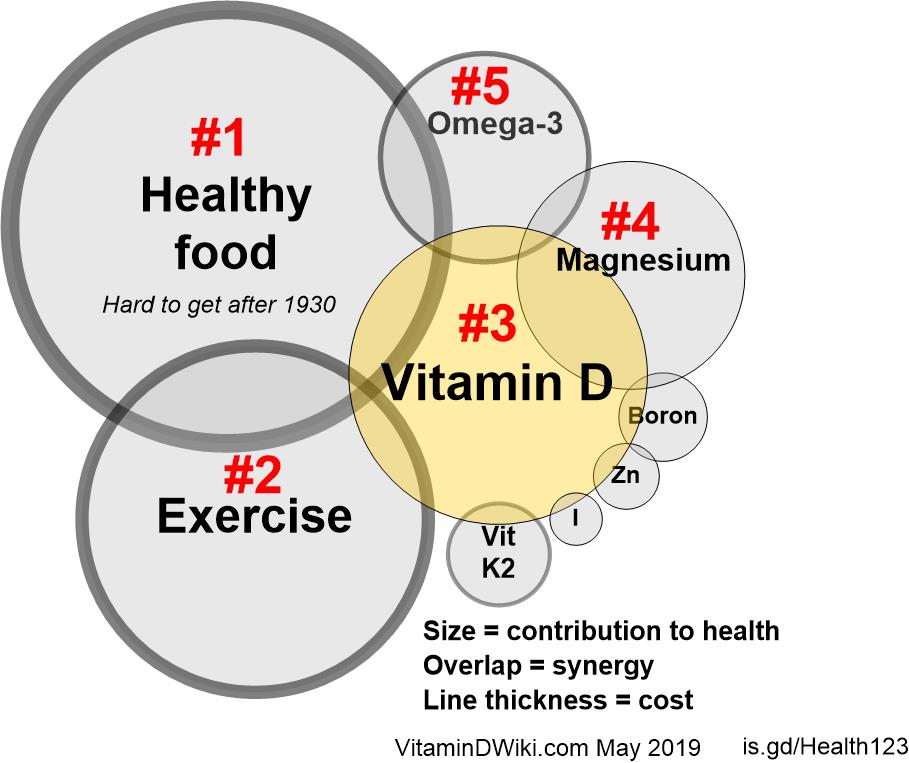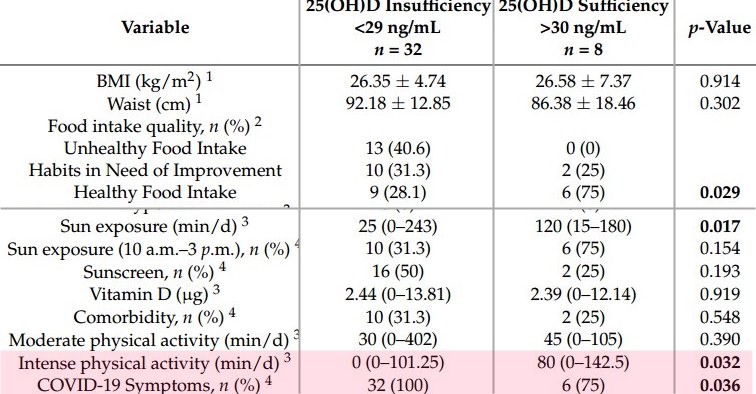Poor food, little intense exercise again associated with low Vitamin D (and more COVID-19 in this case)
Association of Food Intake Quality with Vitamin D in SARS-CoV-2 Positive Patients from Mexico: A Cross-Sectional Study
Int. J. Environ. Res. Public Health 2021, 18(14), 7266; https://doi.org/10.3390/ijerph18147266
by Guillermo González-Estevez 1,2,Francisco Javier Turrubiates-Hernández 1OrcID,Laura Elena Herrera-Jiménez 1OrcID,Gabriela Athziri Sánchez-Zuno 1OrcID,Melva Guadalupe Herrera-Godina 1 and José Francisco Muñoz-Valle 1,2,*OrcID
1 Institute of Research in Biomedical Sciences, Department of Medical Clinics, University Center of Health Sciences (CUCS), University of Guadalajara, Edificio Q, 950 Sierra Mojada, Guadalajara 44340, Mexico
2 COVID-19 Situation Room (Analysis Group), University Center of Health Sciences (CUCS), University of Guadalajara, Guadalajara 44340, Mexico
 1. COVID-19 treated by Vitamin D - studies, reports, videos
* {include}
1. COVID-19 treated by Vitamin D - studies, reports, videos
* {include}
📄 Download the PDF from VitaminDWiki


One of the micronutrients that has attracted the most attention in relation to COVID-19 is vitamin D. Although several factors affect its sufficiency; it has been argued that an optimal diet can ensure the intake of micronutrients with effects on immune response. Therefore, in this work we aimed to evaluate the food intake quality of SARS-CoV-2 positive Mexican patients and some of the common factors related to vitamin D deficiency. We conducted a cross-sectional study in 40 SARS-CoV-2 positive patients. Serum samples and clinical parameters were collected. Micronutrient intake and food intake quality were assessed with a 24-h dietary recall and the Mini-ECCA v.2, respectively. Thirty-eight percent of the sample had a healthy food intake. The median 25(OH)D concentration was 22.7 ng/mL. A considerable insufficient intake of micronutrients with immunomodulatory effects such as vitamin D (p < 0.0001), vitamin E (p < 0.0001), and zinc (p < 0.0001) was shown.
Patients with 25(OH)D sufficiency, defined as a concentration >30 ng/mL,
had better food intake quality (p = 0.02) and an
intense physical activity (p = 0.03).
In conclusion, a better level of food intake quality and intense physical activity are associated with 25(OH)D sufficiency in SARS-CoV-2 positive Mexican patients.
